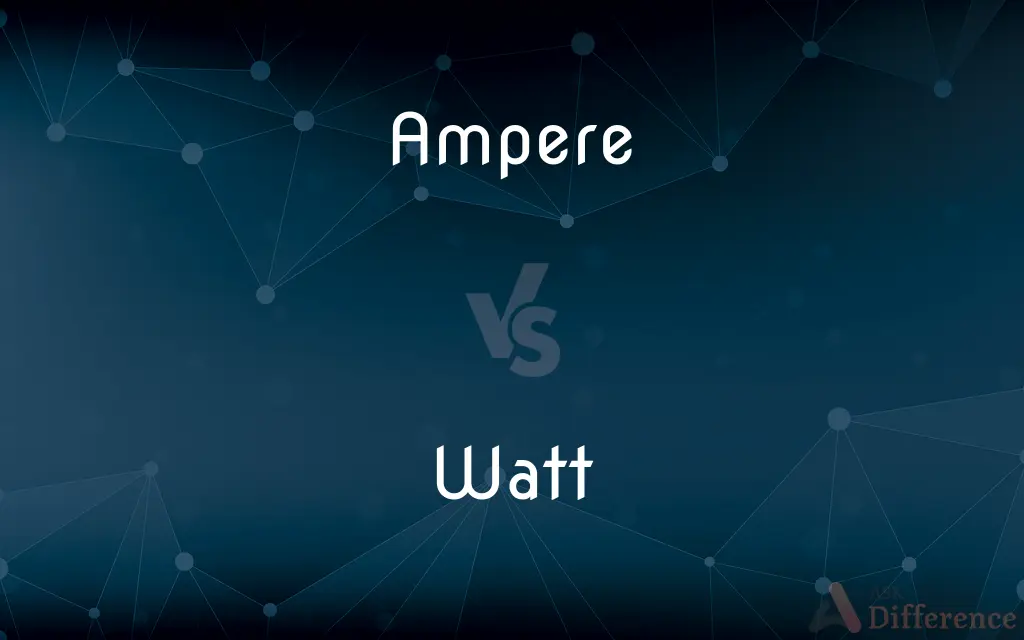Ampere vs. Watt — What's the Difference?

Difference Between Ampere and Watt
ADVERTISEMENT
Compare with Definitions
Ampere
The ampere (, US: ; symbol: A), often shortened to amp, is the base unit of electric current in the International System of Units (SI). It is named after André-Marie Ampère (1775–1836), French mathematician and physicist, considered the father of electromagnetism.
Watt
The watt (symbol: W) is a unit of power or radiant flux. In the International System of Units (SI), it is defined as a derived unit of (in SI base units) 1 kg⋅m2⋅s−3 or, equivalently, 1 joule per second.
Ampere
The basic unit of electric current, equal to one coulomb per second and equivalent to the current, flowing in two straight parallel wires of negligible cross section separated by a distance of one meter, that produces a force between the wires of 2.0 × 10-7 newtons per meter of length. The value of an ampere in the International System differs very slightly from that in the meter-kilogram-second-ampere system of units. See Table at measurement.
Watt
The SI unit of power, equivalent to one joule per second, corresponding to the rate of consumption of energy in an electric circuit where the potential difference is one volt and the current one ampere.
Ampere
A unit of electrical current, the standard base unit in the International System of Units; colloquially amp. Abbreviation: amp, Symbol: A
Definition: The ampere, symbol A, is the SI unit of electric current. It is defined by taking the fixed numerical value of the elementary charge e to be 1.602
X 10−19 when expressed in the unit C, which is equal to A
S, where the second is defined in terms of ΔνCs. ([https://www.bipm.org/en/si-base-units/ampere The International Bureau of Weights and Measures])
ADVERTISEMENT
Watt
An SI-derived unit of power equal to one joule per second. See Table at measurement.
Ampere
The unit of electric current; - defined by the International Electrical Congress in 1893 and by U. S. Statute as, one tenth of the unit of current of the C. G. S. system of electro-magnetic units, or the practical equivalent of the unvarying current which, when passed through a standard solution of nitrate of silver in water, deposits silver at the rate of 0.001118 grams per second. Called also the international ampère.
Watt
In the International System of Units, the derived unit of power; the power of a system in which one joule of energy is transferred per second. Symbol: W
Ampere
A former unit of electric current (slightly smaller than the SI ampere)
Watt
A unit of power or activity equal to 107 C.G.S. units of power, or to work done at the rate of one joule a second. An English horse power is approximately equal to 746 watts.
Ampere
The basic unit of electric current adopted under the Systeme International d'Unites;
A typical household circuit carries 15 to 50 amps
Watt
A unit of power equal to 1 joule per second; the power dissipated by a current of 1 ampere flowing across a resistance of 1 ohm
Watt
Scottish engineer and inventor whose improvements in the steam engine led to its wide use in industry (1736-1819)
Share Your Discovery

Previous Comparison
Push vs. Fetch
Next Comparison
Auditorium vs. Theatre













































